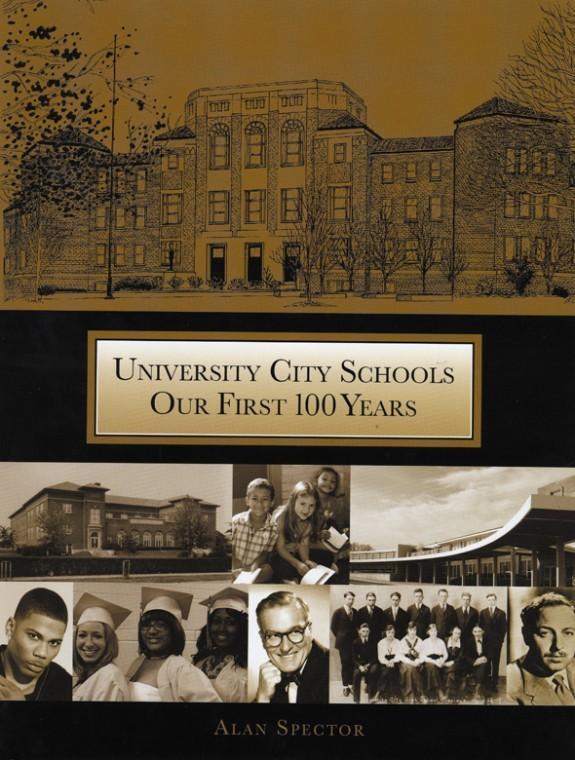Author continues love affair with U. City schools in history book
Published November 23, 2011
Local author Alan R. Spector was recently inducted into the University City High School Hall of Fame, and his long love affair with that storied high school and school district is again celebrated in his latest book, “University City Schools: Our First Hundred Years” (Reedy Press, $50).
In 2009, Spector, a retired businessman, published “Hail Hail to U. City High” (Cincinnati Book Publishers, $18.95), in which he warmly recalls his days as a member of the U. City High Class of 1964 and chronicles the life stories of his classmates-baby boomers who built families, careers and lives through the decades up to the present.
In his new book-part of the celebration of the U. City School District’s first century of service-Spector takes a more straightforward “historical” approach.
Growing up Jewish in U. City from the 1930s through the early 1970s was an incredibly secure experience (disclosure: I am a proud member of the U. City High Class of 1957). Jewish kids were never an outright majority in most of the schools in the district, but there were enough Jews to give them the feeling that they “had the world by the tail with a downhill pull,” according to the late Ira Fleischmann, who often spoke of his U. City days with that expression. When Jews called U. City “Jew City,” it was not considered anti-Semitic, and when the Delmar Loop neighborhood was called “The Ghetto,” it was simply a reflection of perceived demographics.
Among U. City’s many famous alumni was the late Dave Garroway, the very first host of the “Today Show” on NBC. Garroway fell in love with microphones while doing announcements from the office of long time and beloved Principal James E. Baker. Always the cut up, Garroway, who was not Jewish, could not resist announcing, “There will be an assembly for all students at 11 a.m. The Jewish students will meet in the auditorium. The non-Jewish students will meet in the phonebooth!”
Spector’s book is well-written and well-organized and greatly enhanced by vintage photographs from the archives of the City and School District of University City.
Spector provides a comprehensive history of the district’s various elementary schools, including Delmar Harvard Elementary School-which closed its doors after nearly a century of service- the old Hanley Junior High School (which also, sadly, has been razed and replaced with condos), Brittany Woods Junior High and of course U. City High, from its days when the school’s athletic teams were called the Indians and the student newspaper, the Tom Tom. They are now, respectively, the Lions and the U. Time.
One of the highlights of the book is Spector’s discussion of many (but not all) of his fellow members of the University City High School Hall of Fame, which takes up considerable wall space in the school’s halls. Spector includes tidbits about such grads as Ira Herskowitz (class of 1963), a respected geneticist and Professor of Medicine at the University of California-San Francisco. He established a University City High School Teacher Recognition Award to thank the faculty that had made such a difference in his life.
Indeed, superb faculty and administration have been hallmarks of the U. City education experience for all 100 years. The system was the most accepting of the U.S. Supreme Court decision striking down race segregation in its schools, and came through the period of transition thanks to the courage and backbone of leaders like the late Nathan Kaufman and the recently departed Larry Lieberman.
Such giants among faculty included Augusta Gottlieb, who was one of the favorite teachers of Carl Dennis, who went on to win a Pulitzer Prize in poetry. Another English teacher was Margaret Farrar. She taught Shakespeare to such students as Tommy Williams, who would later take the name of Tennessee Williams and win a Tony Award and Pulitzer Prize and whose “The Glass Menagerie” was based directly on his younger days in U. City.
This book is a must for any graduate of the schools in the U. City School District, especially those yearning for a sweet taste of nostalgia. And for those who have not had a direct U. City educational experience, there is still much here to recommend.















